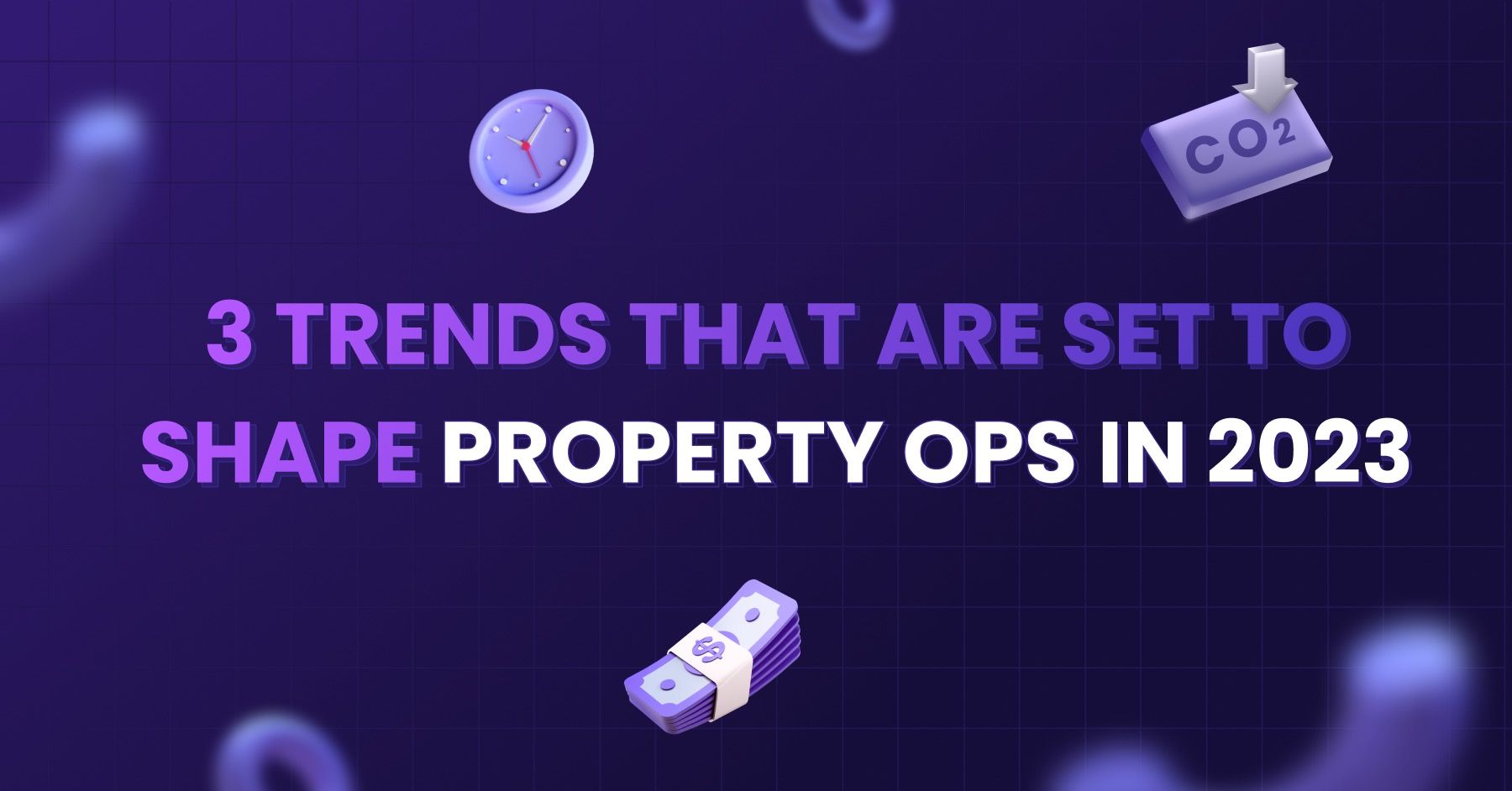Featured Property Operations
3 Trends That Are Set To Shape Property Ops in 2023

Revenue stagnation, increasing operational costs, and sustainability compliance regulations are primary causes of concern for the real estate industry and large enterprises globally in 2023.
While most of these are common problems real estate owners and operators encounter, they threaten the very existence of such businesses during economic downturns.
How do they keep themselves afloat and profitable?
Real estate owners and operators are turning to technology solutions to find ways to curb spend and improve bottomline in 2023 and beyond.
The C-Suite especially, has started viewing property operations technology as a strategic investment, and expects comprehensive and real-time visibility into their real estate portfolios’ performance.
This data will help them make data-driven decisions to reduce operational expenses and increase productivity, improving the bottom line at every step.
The tools and platforms that deliver high-level overviews and real-time insights into critical O&M parameters for portfolio performance to senior leadership will do well going into the future.
#1: Property operation tech will become a strategic investment
To keep up with the evolving demands from CRE portfolios, it becomes imperative to choose a software-led approach to optimize portfolio operations.
Organizations are increasingly seeking property operations software platforms that can unify data silos and help leadership teams plan, set cost-effective O&M strategies, and measure performance against it.
The industry wants to circumvent the frustrations of dead-end tools and needs a unified system of action rather than just a system of record.
As with any investments made into digital transformation efforts, property ops tech procurement must be handled by leadership teams.
The right platform will eliminate silos and allow all important stakeholders to access the data they need, along with a bird’s eye view of portfolio-level critical parameters.
Real-time, well-rounded, and accurate data is now a standard expectation from commercial facilities.
Tools which can deliver this at scale will win in 2023 and beyond.
Trend #2: Faster time-to-value and flexibility to scale will be No.1 priority for O&M teams
Just as things move at the click of a button—from booking a cab, to ordering food, to even automating financial transactions, real estate owners/operators are looking for solutions that deliver similar experiences in their day-to-day tasks.
They prefer scalable platforms that are flexible enough to incorporate new technologies such as IoT sensors, building management systems, and devices as they are introduced to the infrastructure.
Such platforms enable real estate owners/operators to start deriving value from their investments with a much lower time-to-value than is typical for the real estate industry.
From our discussion with O&M teams world over one thing remains clear - they want interoperability, scalability and low barriers for change management to stay relevant in the ever-changing environment of property ops tech.
Trend #3: Decarbonization will remain a key focus area
With increasing government regulations for net zero emissions goals and an impending recession, decarbonizing goals are more important now than ever for most businesses.
CRE owners and enterprises will have to approach energy cost reduction as a comprehensive strategy to make sustainability a habit.
The first (and cost-effective) steps to net zero are digital retrofits and cloud-based controls that give O&M teams granular visibility into asset and energy performance metrics.
Cloud supervisory platforms enable data-driven sustainability to monitor, analyze, and remotely optimize their existing automation systems and guide further efforts to more advanced ways to conserve energy.
Reimagining property operations for 2023 and beyond
A lot has changed over the last few years. Workplace occupants expect a higher standard of service, safety, comfort, health, productivity, and experience from office spaces.
While technology has remained the answer for long, the time is now to take stock of your current O&M strategy and plan your 2023 agenda on the back of the key themes dominating the industry.
SaaS-driven efficiency, agility, and innovation will be the way to keep up with the ever-evolving demands and expectations from commercial facilities.
There is a sea of vendors offering property ops tech solutions for every O&M use case. However, unless property operations are approached as a holistic and unified function, the network of specialized systems and software you deploy may sit in silos and could turn counter-productive, costing you efficiency gains and savings in the long run.
Picking a flexible, scalable platform that enables interoperability to put you on the path to more O&M efficiencies will make all the difference, delivering a portfolio of high-performing buildings and assets in 2023 and forever.

